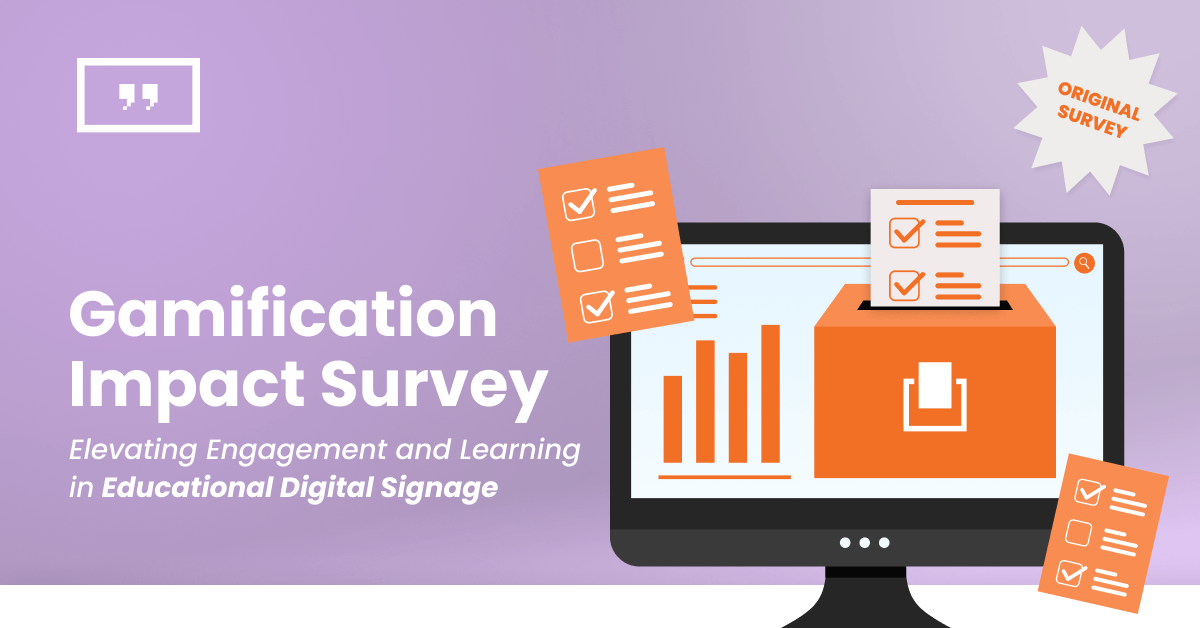Technology has become a key driver in enhancing learning experiences in the dynamic education landscape. One innovative approach gaining traction is the infusion of gamification in educational digital signage. This original survey explores the impact of gamification, revealing compelling insights that underscore the potential of gamified elements to revolutionize engagement and learning outcomes.
What is Gamification in Educational Digital Signage?
Gamification in educational digital signage refers to integrating game-like elements and mechanics into digital displays and signage in educational settings. It involves incorporating interactive and engaging features commonly found in games to enhance the learning experience and achieve specific educational objectives. This innovative approach leverages the principles of game design to make educational content more captivating, enjoyable, and effective.
Key Elements of Gamification
Interactive Content
Gamified digital signage often includes interactive content that encourages user participation. This can range from touchscreens and interactive quizzes to augmented reality experiences. By actively involving students in the learning process, gamification aims to improve engagement and knowledge retention.
Points, Badges, and Rewards
Borrowing from gaming conventions, educational digital signage may implement point systems, badges, and rewards to motivate and incentivize learners. Students can earn points or badges for completing tasks, achieving milestones, or mastering specific topics. These elements create a sense of accomplishment and progression.
Competition and Collaboration
Gamification introduces elements of competition or collaboration, fostering a sense of challenge and teamwork among students. Leaderboards, timed challenges, and group activities encourage healthy competition or cooperation, creating a dynamic and social learning environment.
Storytelling and Narratives
Incorporating storytelling elements into educational content adds a narrative layer to the learning experience. Gamified digital signage may present information as a storyline or scenario, allowing students to follow a plot or solve problems within a context, making the learning more engaging and memorable.
Immediate Feedback
Games often provide immediate feedback, and this principle is applied in educational gamification. Quick feedback on quizzes, assessments, or interactive activities helps students understand their progress, identifies areas for improvement, and reinforces positive learning behaviors.
Adaptability and Personalization
Gamification allows for adaptive learning experiences tailored to individual student needs. Digital signage can adjust difficulty levels, pacing, and content based on a student’s performance, ensuring each learner’s personalized and challenging learning journey.
Use of Avatars and Characters
Incorporating avatars or characters into the gamified educational experience adds a fun and relatable aspect. These elements can guide students through the learning process, provide assistance, or serve as companions, making the educational journey more enjoyable.
Real-world Application
Gamification often seeks to bridge the gap between theoretical knowledge and real-world application. Simulations, role-playing scenarios, and problem-solving activities within the digital signage contribute to a more practical and applicable understanding of the subject matter.
Research Findings Analyzed
We conducted original research to unravel the potential of gamified elements within educational digital environments. By meticulously analyzing the interplay between gamification strategies and digital signage in academic settings, we seek to provide valuable insights into how these innovative approaches can synergistically enhance student engagement and contribute to more effective learning experiences.
This research marks a significant stride in understanding the dynamic relationship between technology, game-like elements, and educational efficacy, with the ultimate goal of informing educators, administrators, and technologists on optimizing educational digital signage for maximum impact.
Let’s analyze some significant findings:
Gamification’s Influence on Knowledge Retention
A staggering 78% of respondents believed in the profound impact of integrating gamified elements into educational digital signage on knowledge retention and understanding. This statistic underlines the potential of gamification to transform the educational landscape by making learning more immersive and memorable. As traditional teaching methods evolve, gamification could be a game-changer.
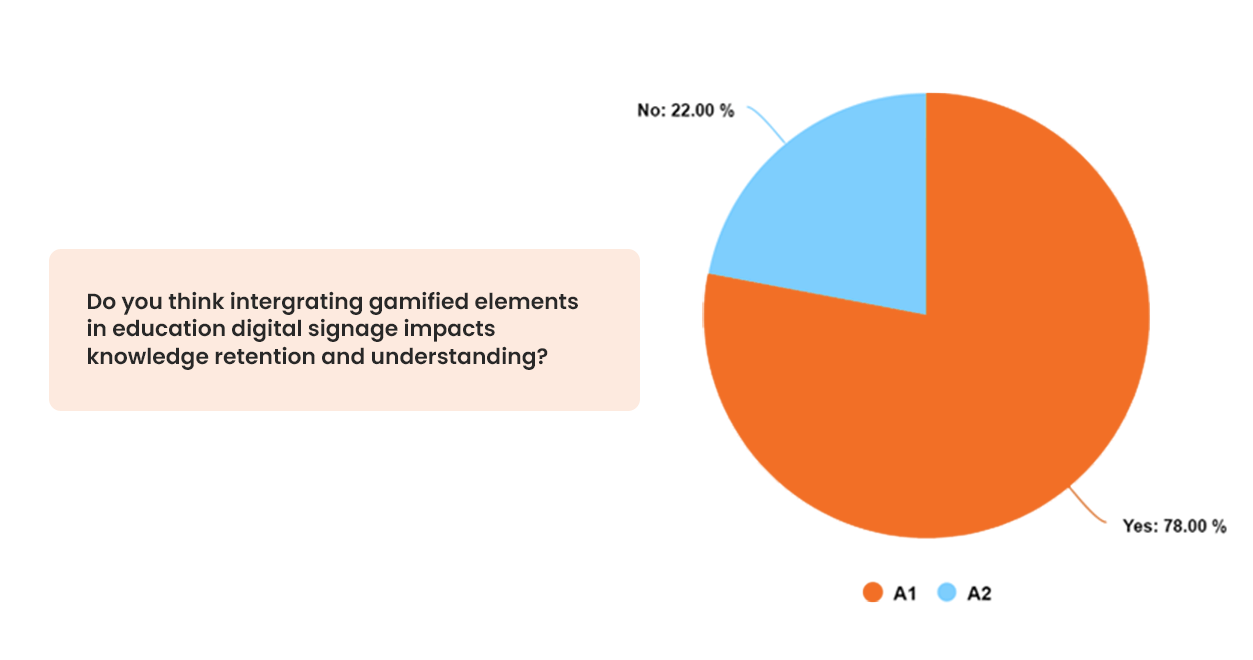
A Majority has Experienced Gamification
The survey also highlighted that 62% of respondents have already experienced gamification elements in educational digital signage. This suggests a growing awareness and acceptance of interactive and game-like features as viable tools for enhancing the learning process. As technology advances, educators and institutions can leverage these elements to create engaging and effective learning environments.
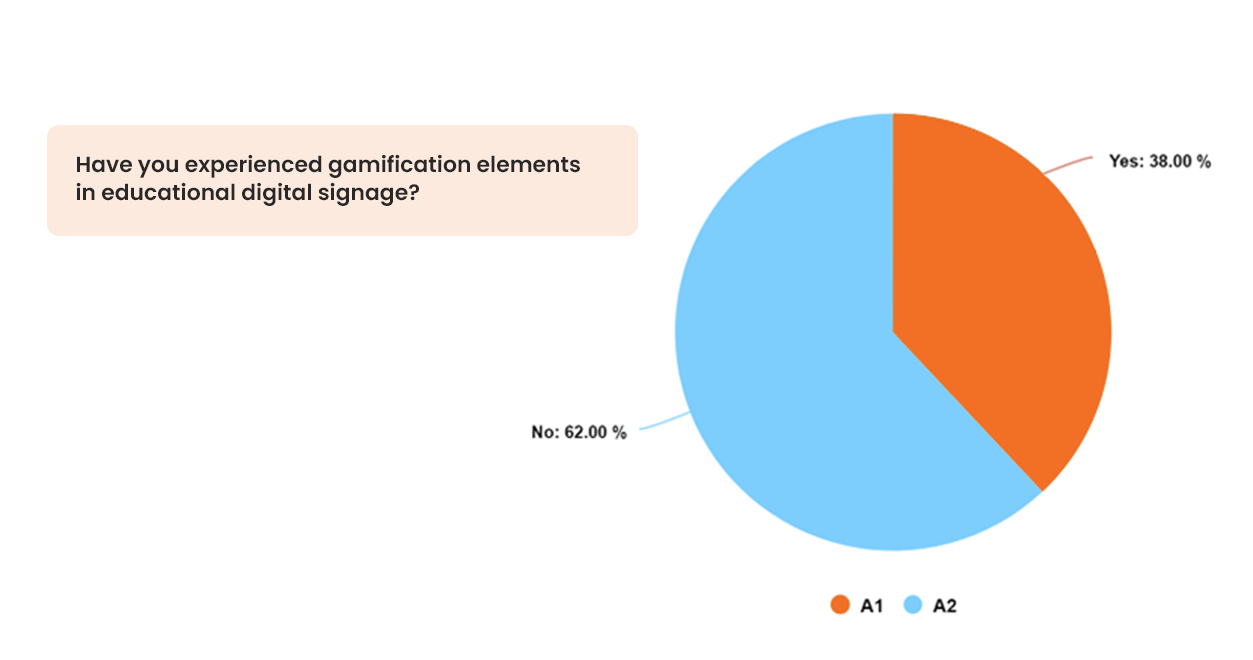
Interactive Elements as Key Drivers of Engagement
According to the survey, 71% of respondents considered interactive elements the most effective content for engagement. This emphasizes the importance of incorporating hands-on, participatory experiences in educational settings. Whether through quizzes, simulations, or collaborative activities, interactive content has the potential to captivate learners and foster a deeper understanding of the subject matter.
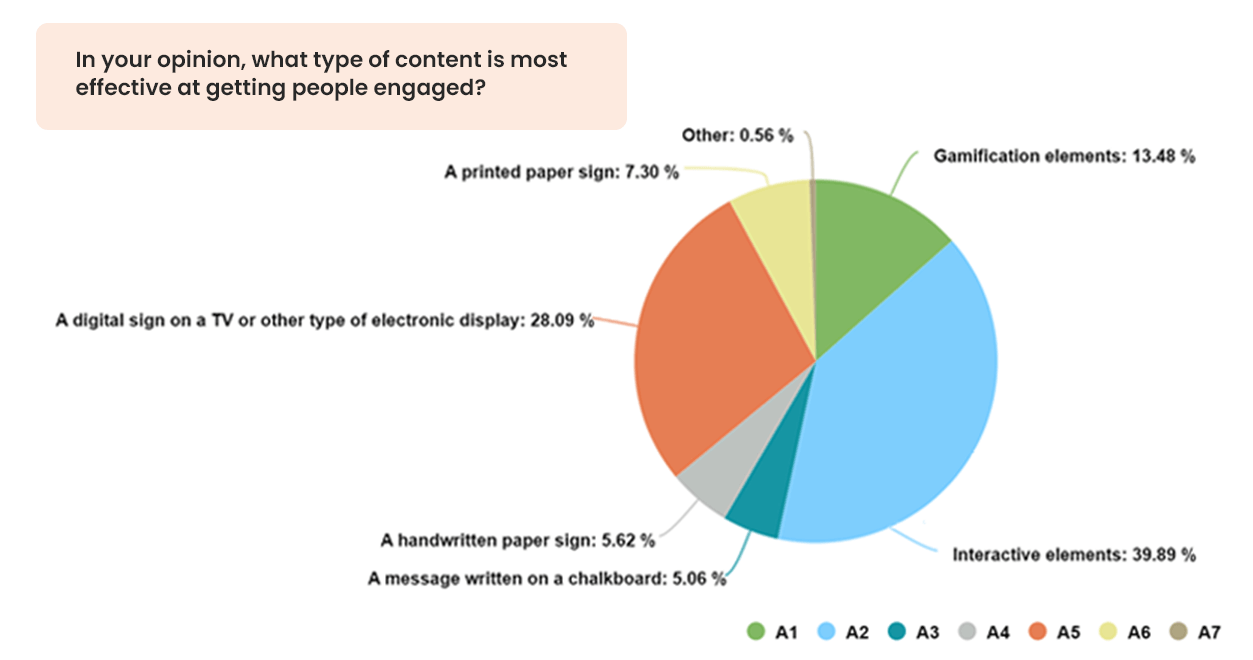
Adaptability to Future Educational Trends
An overwhelming 93% of respondents expressed optimism about the potential of gamified digital signage to evolve and adapt to future educational methods and technology changes. This forward-thinking perspective suggests that gamification is not merely a passing trend but a flexible and dynamic tool that can align seamlessly with the ever-evolving nature of education. As teaching methodologies transform, gamified digital signage stands poised to be an adaptable ally in the pursuit of effective learning.
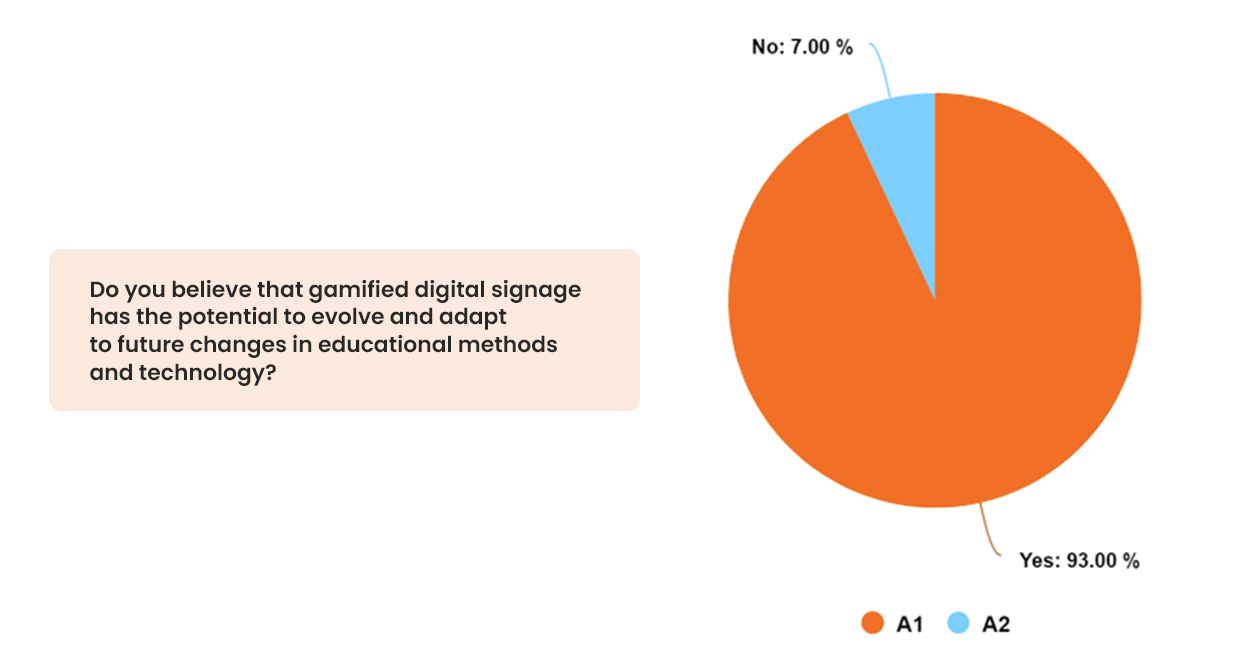
Effectiveness in Enhancing the Learning Environment
While most respondents were optimistic about the impact of gamified elements, 35% found educational digital signage to be very effective in enhancing the learning environment. While gamification holds great promise, there may still be room for improvement and refinement in implementing these elements to maximize their effectiveness across diverse educational settings.
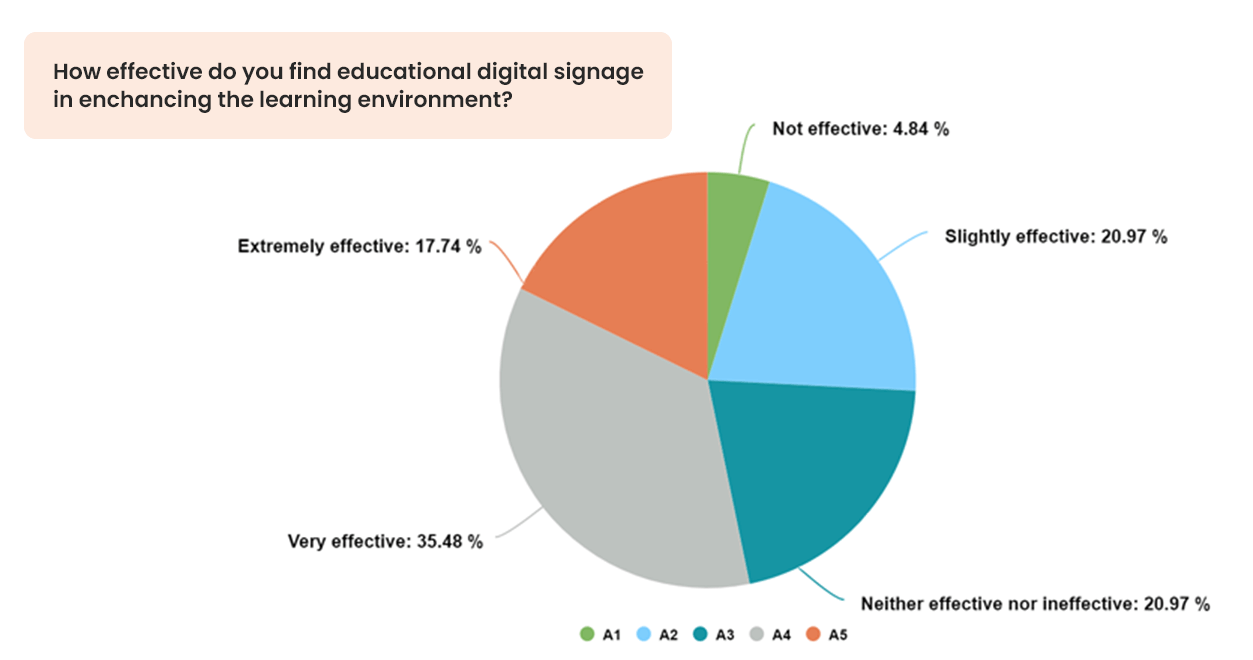
Practical Implications for Educators
These research findings offer valuable insights for educators considering the integration of gamification in educational digital signage. The positive correlation between gamified elements and knowledge retention underscores the potential benefits of incorporating game-like features into educational content.
Moreover, the emphasis on interactive elements and recognizing the adaptability of digital signage to future changes suggest that educators prioritize dynamic, responsive content that engages students actively. This might involve the creation of gamified challenges, collaborative projects, and interactive quizzes to align with the preferences of most respondents.
To sum up
The survey results affirm that gamification in educational digital signage is not just a trend but a transformative force that can reshape how we approach learning. From boosting knowledge retention to fostering adaptability in education, gamification emerges as a versatile tool that educators and institutions can leverage to create engaging and effective learning environments. As technology advances, the cooperation between gamification and education is a beacon of innovation that illuminates a path toward a more interactive and impactful future for learners worldwide.
